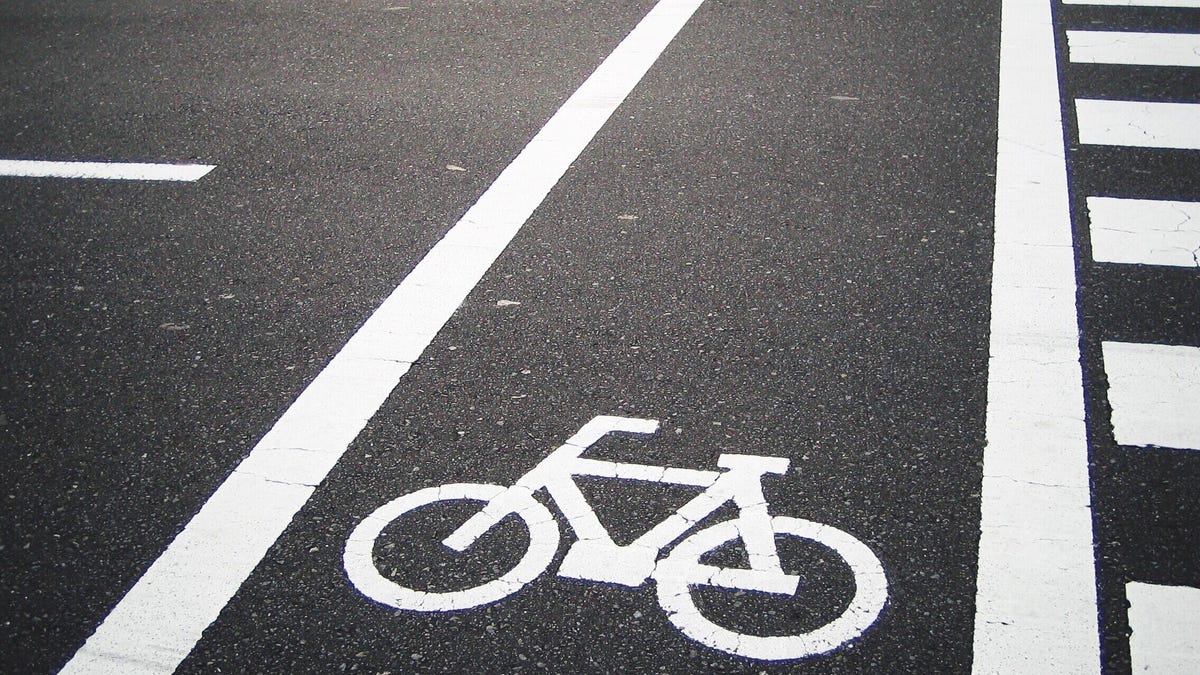 Why You Can Trust CNET
Why You Can Trust CNET 10 tips to safely listen to music while running or biking
Running or biking while listening to music can be dangerous if you aren't aware of your surroundings. Follow these tips to do it safely.

Running or cycling roadside can result in accidents if you aren't careful. Consider these tips to preserve your hearing next time you head out.
Among the running and cycling communities, there's an ongoing debate about whether or not you should listen to music while on a run or ride. On one hand, listening to music while working out may improve your performance and help you sustain your workout for longer.
On the other hand, listening to music while biking or running roadside presents danger, as headphones and earbuds impair one of your most important senses -- hearing.
Because music makes most things more enjoyable and most people aren't likely to leave their headphones behind, I rounded up 10 tips for safely listening to music on your next bike or run.
1. Leave one earbud out.
You might think this defeats the purpose of wearing earbuds while running and biking, but you'd be surprised at how well you can still hear music with just one earbud in. Leave open the ear that's facing traffic so you can hear everything that comes your way.
2. Don't use noise-canceling headphones or earbuds.
Noise-canceling headphones and earbuds definitely have their place -- airplanes, subways, crowded offices and other noisy environments. The road is not an environment where noise-canceling headphones would serve you well. If you must leave both ears covered, wear a pair of regular headphones that still allow you to hear oncoming cars, sirens and other traffic sounds.
3. Try bone conduction headphones.
Bone conduction technology, like the name implies, delivers sound through your bones. In the case of headphones, sound enters your ear through your cheekbones, bypassing your eardrum. That's why bone conduction headphones, such as Aftershokz, don't sit inside your ears. Instead, they sit in front of your ears, allowing you to hear outside sounds while music plays.
With bone conduction headphones, you can hear music and environmental sounds, such as cars, dogs and pedestrians.
4. Keep the volume down.
Simple, but effective. Not only does keeping the volume down protect you from accidents, it also reduces your risk of developing noise-induced hearing loss -- a win-win situation.
5. Check wind speeds before you go.
The faster the wind blows, the harder it gets to hear music through earbuds. If your weather app says wind speeds are high, consider leaving your music behind. You'll avoid the inevitable cycle of turning up the volume only for the wind to continually drown it out.
6. Clip on a Bluetooth speaker.
This is a great alternative to bone conduction headphones if you want to listen to music without anything in your ears. Get a small Bluetooth speaker and clip it onto whatever's convenient. If you're cycling, you may want to clip it to a backpack or handle. If you're running, you can clip small speakers to hydration vests or your clothes.
7. If you're a cyclist, invest in a Bluetooth helmet.
If you bike often, you should look into smart bike helmets, like this one from Coros. You should always wear a helmet regardless, but a Bluetooth-enabled helmet keeps you safe and allows you to jam out while staying aware of surrounding sounds.
A smart bike helmet could be a good investment if you cycle a lot.
8. Pull all the way off the road if you need to adjust the volume.
If something goes wacky with your music, get completely out of harm's way before adjusting. This may seem like common sense, but attempting to run or bike while adjusting volume, switching songs or adjusting your speaker/headphone setup can result in serious accidents.
9. Follow the rules of the road.
Rules for runners and bikers may vary by state, county or city, but in general, bikers must follow the same rules as vehicles and runners must follow the same rules as pedestrians. Brush up on your knowledge by visiting your area's department of transportation website.
10. Stay vigilant.
Just because you're following the rules, that doesn't mean everyone else on the road is. It's easy to get lost in your favorite tune, but don't get too distracted, or you might run into trouble. Watch for pedestrians, other cyclists and runners, emergency vehicles and drivers who are speeding, making sudden lane changes or doing anything else that may result in an accident.

